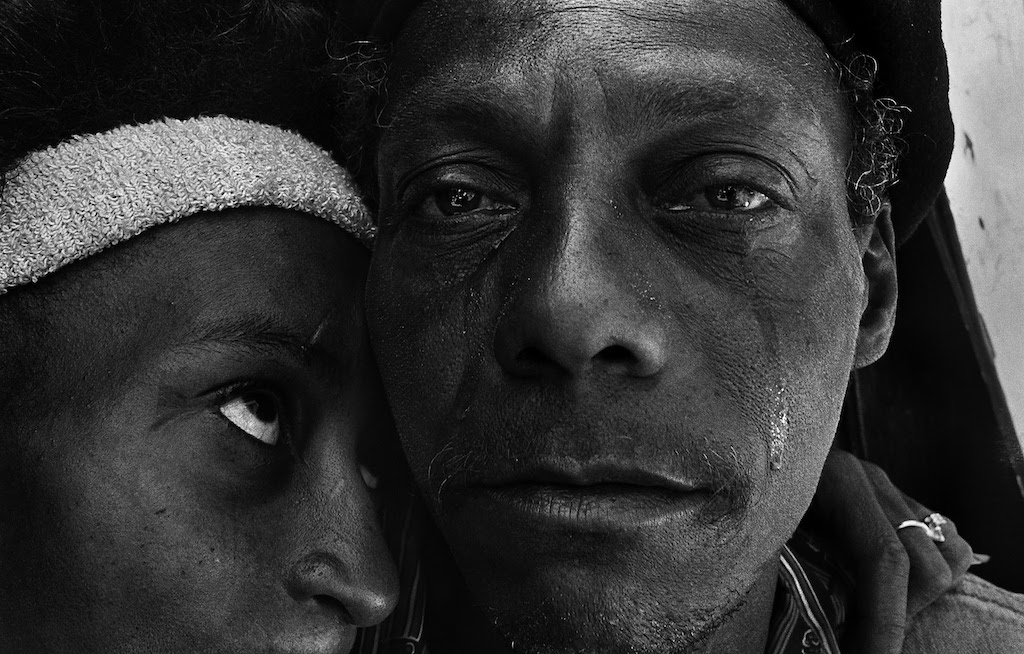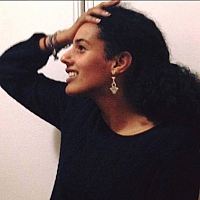
Back from prison, Shantytown, New York City, 1986 © Eugene Richards
Expositions du 1/10/2016 au 6/11/2016 Terminé
Bronx Documentary Center 614 Courtlandt Avenue 10451 New York États-Unis
Bronx Documentary Center's press releaseBronx Documentary Center 614 Courtlandt Avenue 10451 New York États-Unis
It's been almost thirty years since the publication of Eugene Richards's landmark book, Below the Line: Living Poor in America. The book, though acclaimed at the time, was also controversial. Critics applauded the revealing nature of the stories, but often added, as if in the same breath, that what was being shown was a negative view of the country, one that lacked hope. Pushed to reply, Richards countered that these stories were, in fact, portraits in courage. Each person encountered on his journey across America was struggling, against great odds, to better him or herself.
On the occasion of its 5th anniversary in October 2016, the Bronx Documentary Center (BDC), a non-profit gallery and educational space whose mission is to share documentary photography, film, and new media with underserved Bronx communities and the cultural community at large, is honored to present Below the Line: Living Poor in America by Eugene Richards. The exhibition will feature more than two dozen black and white photographs from Richards's seminal project that depicts the extent of poverty in the United States in the mid 1980s. The project garnered Richards the 1987 International Center of Photography Infinity Award for Outstanding Accomplishment in Photographic Reportage.
Published by Consumer Reports Books in 1987, Below the Line consisted of taped interviews and photographs made by Richards during a seven-month journey across America in 1986 visiting poor rural and urban communities in eleven states from Massachusetts to Wyoming. Richards writes: "As one person's history unfolded, I was often directed towards others. When I was with embattled farmers in South Dakota, I was moved to think of the migrant laborers who also worked the land, yet have no title to it. The family I visited in the Tennessee Mountains was barely hanging onto their ancestral homeland. How must it be, then, for people newly arrived in this country that must adapt to a new language, different customs, to an inhospitable economy? In the Arkansas Delta, the grandchildren of the aging and weary sharecroppers I photographed could barely wait to get away from home, to Chicago or New York, which held more promise for them ... "
The BDC's Melrose neighborhood in the Bronx remains one of America's poorest communities, located just four subway stops away from one of the country's wealthiest, the Upper East side of Manhattan. It is the BDC's hope that Richards's powerful exhibition will stimulate a dialogue between the local communities it serves and the world at large about actionable steps to fight poverty.
.jpg)
Still House Hollow, Tennessee, 1986 © Eugene Richards
About the Photographer: Eugene Richards is a photographer, writer, and documentary filmmaker who has authored seventeen books, the most recent being War Is Personal (Many Voices Press, 2010), a documentation in words and pictures of the human consequences of the Iraq war, and Red Ball of a Sun Slipping Down (Many Voices Press, 2014), which speaks of life in the Arkansas Delta decades ago and today. Among numerous honors, Mr. Richards has received a Guggenheim Fellowship, the W. Eugene Smith Grant in Humanistic Photography, and the Kraszna-Krausz Award for Photographic Innovation in Books. He was the recipient of the 1987 International Center of Photography Infinity Award for Outstanding Accomplishment in Photographic Reportage for Below the Line: Living Poor in America. His photographs are represented in the collections of the Metropolitan Museum of Art, MOMA, the International Center of Photography, and the Smithsonian American Art Museum, among others. For more information, go to: www.eugenerichards.com.
About the BDC: The Bronx Documentary Center presents the work of internationally renowned and emerging documentarians who are dealing with the themes that guide the BDC: justice, education, community-building, and positive social change. In doing so, the BDC fosters a dialogue with underserved communities in the Bronx and the cultural community at large around pressing local and international issues.
Since opening its doors in 2011, the BDC has held 25 major exhibitions and hundreds of public programs, including film screenings, lectures, workshops, free guided exhibition tours for over 150 school groups and community organizations, and community-based service projects such as free holiday portraits for South Bronx residents. They also offer two major education programs. The first are regular free photography classes for the community, where at least 20 Bronx photographers come each week to share works in progress, see slideshows by leading photographers, and gain technical instruction and employment opportunities; the Bronx Photo League grew out of this program. The Bronx Junior Photo League is an after school program serving 28 middle-school through high-school students, teaching them how to use photography and writing to express their views surrounding social justice in their community.
The BDC has opened in May 2016 the Tim Hetherington Photobook Library, one of New York City’s few libraries dedicated to photography. The library is stocked with the books of the late Tim Hetherington, an Oscar nominee and World Press Photo award winner, who helped plan the BDC before his tragic 2011 death in Libya. The library was constructed over the span of a year by the BDC’s cadre of volunteers. The BDC gratefully acknowledges the support of Tim’s parents, Judith and Alistair Hetherington who generously donated his books to the Bronx Documentary Center.
.jpg)
Porter Lee and Mr. Will, Hughes, Arkansas, 1986 © Eugene Richards


